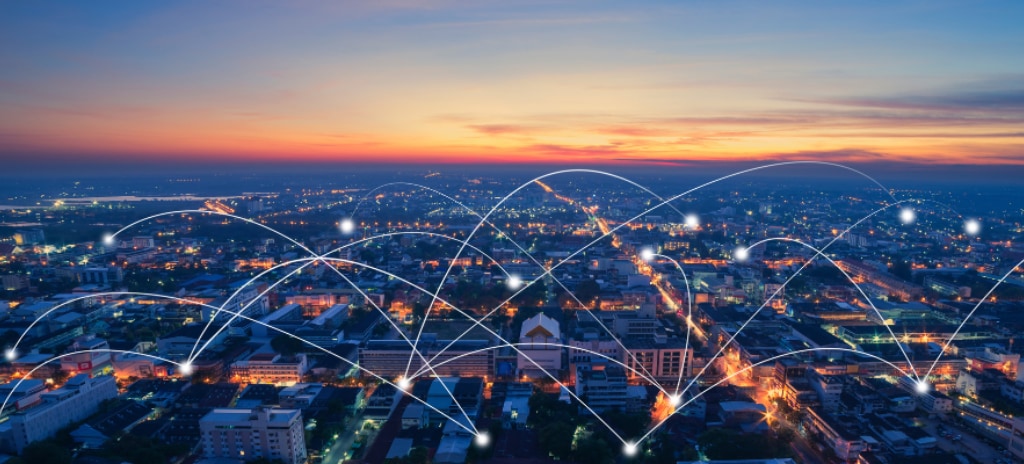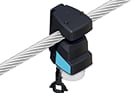
TE Perspectives
A Smarter, More Reliable Power Grid
Author: Dr. Ulrich Greiner, Research & Development, Energy
As the world works to manage the energy transition, the ways we generate and consume power are poised for radical change. The electrical grid that delivers this power must also change, becoming smarter to adapt to new sources of generation and maintain reliability.
Renewable power sources such as wind and solar introduce variability to the supply side of the equation since the sun doesn’t always shine and the wind doesn’t always blow steadily. The rise of electric vehicles, larger data centers and the general electrification of everything are increasing the demand placed on the grid as well. At the same time, the increased frequency of severe weather events raises the potential for more widespread power outages.
Throughout these changes, grids must continue to deliver power reliably. When people flip a switch, they expect the lights to go on. When they don’t, consumers and regulatory bodies notice. The grid must become more flexible and resilient to handle these changes. In short, it must become smarter — that is, it must have access to the information needed to control and deliver power safely to all customers with minimal downtime.
A more transparent grid is a more resilient grid
In the power industry, reliability is measured via the System Average Interruption Duration Index (SAIDI), which provides the average number of minutes an average customer in a region is without power over the course of a year.
The ability to gather more information about the flow of electricity across a grid can help locate faulty wires and reduce the time it takes to get the power back on when something goes wrong — decreasing downtime and improving reliability.
Sensors provide critical information about the levels of voltage and current running through a circuit at a specific point along the line. That information can support a more resilient grid in several ways.
Improved maintenance
Some sensors can detect intermittent fluctuations in current that don’t trip the circuit but do indicate the potential for an outage in the future. By collecting data on the accumulation of these spikes in current, electricity providers could set thresholds for alerts and repair or replace failing equipment before it causes downtime.
Following the recent acquisition of German smart grid pioneer Kries, TE Connectivity has also developed a device that can detect a partial discharge, a precursor to intermittent faults. When combined with remote signaling capabilities, these devices give electricity providers even more information to help prevent faults in the first place. In addition to improving reliability, reducing the number of ground faults can reduce the chances of those faults sparking wildfires in dry climates.
Faster localization of faults
Historically, detecting faults in the distribution system has required manual checking for notifications of faulty circuits in the ring main units (RMUs) or pad-mounted switchgear enclosures that sit between substations and the transformers outside houses and businesses. Placing sensors called faulted circuit indicators (FCIs) on power lines can help locate problems more precisely, providing an opportunity to isolate the fault and reroute power to parts of the circuit that can safely receive it. Reducing the amount of time it takes to locate the fault also means workers can get on site faster, reroute power as appropriate and begin fixing the problem.
Enabling remote rerouting
Adding remote switching modules to RMUs can speed things up even further. With the ability to control circuit switches from a remote location, power companies can reroute a circuit around a fault without having to dispatch personnel to do so. Computer systems capable of automating this remote switching can accelerate response times even further, as the system can reroute power intelligently as soon as it detects a fault.
This type of automated rerouting is also useful for providing power to critical infrastructure, such as hospitals or tunnel ventilation systems. In these cases, circuits could be connected to a backup electricity supply. When the system detects a failure, it could automatically disconnect the defective feeder line and connect the healthy one, restoring power in seconds — essentially a large-scale equivalent of a whole-house generator.

Laying the foundation for a more flexible grid
Automatic rerouting is a prerequisite for balancing electrical loads across a smart grid supplied by an increasingly varied mix of power sources. To incorporate intermittent loads from renewable power sources, electricity providers will need to be able to process real-time intelligence to balance supply and demand. That intelligence will also be necessary to incorporate more widely distributed sources of power into the grid. The centralized power plants that supply power today can adjust their output based on demand in their service area. To maintain a steady supply of electricity when both supply and demand fluctuate across a wider array of sources, providers must have clearer visibility into the entire power generation and distribution system.
The data these sensors collect can also inform plans for fundamental changes to the grid as electricity supply and demand dynamics continue to change. What’s more, better data can support longer-term tasks, such as planning grid expansions or maintenance. Without knowing exactly what a local distribution network’s needs are, it’s virtually impossible to upgrade hardware efficiently. A better understanding of where demand is growing on the grid makes it easier for providers to determine whether they can route power more effectively across their current infrastructure or if they need to expand that infrastructure to continue serve their customers effectively.
In the future, this combination of intelligence and automated switching could help incorporate alternative power supply models in an increasingly electrified world. The introduction of large-scale modular power generation to smart grids could help get areas back up and running after natural disasters. The grid could also intelligently route excess power to battery storage installations that supplement supply when demand rises. It also paves the way for creative solutions, such as using electric vehicle batteries or home-based uninterruptible power supplies to act as a distributed battery when they are otherwise idle, providing additional flexibility to fill the gap when renewable production is reduced.
That future may not be as far off as it seems. In many cases, it’s possible to retrofit existing equipment with upgraded devices and sensors today, integrating more intelligence into the grid sooner and at a lower cost. These upgrades could provide immediate value by speeding up localization of faults and increasing reliability today, while laying the groundwork for a more resilient energy future.
Insights on Power System Technology
About the Author

Dr. Ulrich Greiner
Dr. Ulrich Greiner is manager research & development and product development engineering at Kries Energietechnik GmbH & Co KG a part of TE Connectivity. In his role he is responsible for developing new products, sustaining engineering and industrialization of products that help utilities to secure a transparent and resilient medium voltage grid. The products range from local current and voltage monitoring solutions to remote monitoring and protection devices. He has more than 12 years of experience in solutions for medium voltage distribution grid. He holds a Ph.D. in physic form University of Kaiserslautern and has previously studied at University of Stuttgart and Michigan Technological University.
More Stories on Tech Innovation

 e
e
 e
e



